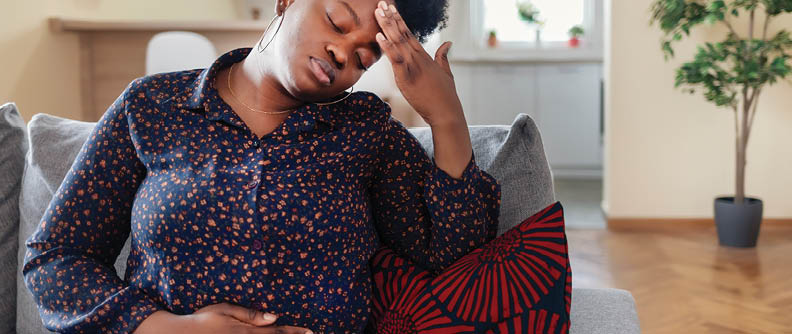It’s very important to check your blood pressure during pregnancy. High blood pressure, called hypertension, could cause problems for you or your baby.
Make sure to go to all your prenatal appointments. Your clinician checks your blood pressure at each visit, which can help catch problems early.
Types of high blood pressure in pregnancy
A few different types of high blood pressure can affect pregnant people. Some just need to be monitored, but others can be harmful if they aren’t treated.
High blood pressure before week 20 of your pregnancy is called chronic hypertension. If your clinician diagnoses it after week 20, it’s called gestational hypertension.
Preeclampsia is a serious condition that can affect all organs. High blood pressure that’s newly diagnosed after week 20 may be the first sign of preeclampsia. Another condition is called chronic hypertension with superimposed preeclampsia. It occurs when preexisting high blood pressure gets worse after week 20. Both conditions might be accompanied by protein in the urine.
A serious condition known as HELLP syndrome can hurt you and your baby. This usually occurs in the third trimester, but it can develop anytime in your pregnancy. Your clinician will screen you for this condition at every prenatal visit.
Understanding preeclampsia
The exact cause of preeclampsia isn’t known. Clinicians believe it occurs when the placenta doesn’t grow properly inside the uterus, leading to reduced blood flow.
If you have mild preeclampsia, you may not have any symptoms. However, more serious cases can cause symptoms like:
- Facial swelling
- Rapid weight gain
- Swelling in the hands or legs
In severe cases, preeclampsia causes bad headaches, trouble breathing, and vision problems.
Clinicians diagnose preeclampsia with a blood pressure check at your prenatal appointments. If there’s a sudden spike in your blood pressure, your urine will be checked for extra protein. You may also have blood tests done to check your kidney and liver function, and platelet count. This helps determine if you have preeclampsia and if it is a severe form called HELLP syndrome.
In most cases, preeclampsia goes away on its own after a person gives birth. However, you may need treatment to keep your blood pressure down. Your clinician might prescribe medications to lower your blood pressure and help your baby’s lungs develop fully.
In some cases, preeclampsia can start during labor or after birth, so it is important to continue to watch out for any symptoms.
You may need to check your blood pressure at home using a monitor. You can help your blood pressure stay low by:
- Avoiding high-sodium foods and medications, such as certain over-the-counter cold medicines known to raise blood pressure. Ask your clinician or pharmacist if you have any questions about medications.
- Eating a healthy diet with lots of fruits and vegetables
- Quitting smoking
Don’t take your blood pressure right after exercising¬ when it’s naturally higher. Wait at least 15 minutes. Also, don’t take it when you’re nervous or upset. Be sure to sit calmly, with both feet on the floor, for at least 5 minutes before taking your blood pressure.
Know when to call your care team
If you have any type of hypertension during pregnancy, know when to contact your care team if something’s wrong. Call 911 immediately if you need emergency care, such as if you’ve passed out or had a seizure.
Be sure to contact your clinician right away if you have preeclampsia symptoms, such as:
- A severe headache
- New vision problems
- Swelling in your face, hands, or legs
Your clinician should also know about symptoms such as:
- Blood pressure that’s higher than 160/110
- Quickly rising blood pressure
- Nausea or vomiting that hasn’t happened before
- Pain in your belly or pelvis
- Rapid weight gain
As always, let your care team know immediately if you think you’re in labor.
